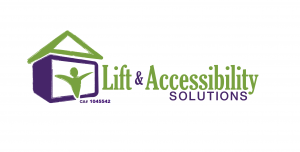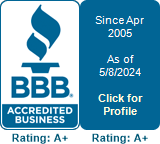24 Jul 2014
Curved Stairlift Options To Consider
Good afternoon, this is Paul Harlin with Lift and Accessibility Solutions at a client’s home here in Santa Rosa where we installed a curved stairlift several months ago.
One of the things that we wanna talk about that with a curved stairlift is we have a lot more options in where we start and stop the chair after it’s gone up and down the stairs. In this particular place, we left the chair stopped just as it got to the bottom of the stairs in what’s called a low intrusion, very close to the stairs’ mount.
We could have also just as easily wrapped that chair around and put it back here where the clock is if the client had preferred to have the chair a little more outside the entry. But since they had enough space and the clock was important, they chose to leave the chair at the bottom of the stairs. Similar options also occur at the top of the stairs where we can actually go past the stairs, go out on the landing, maybe turn a 90 degree corner, and park around behind on a wall; all things that make it easier to get on and off the stairs and also make it easier to carry other things up the stairs because the chair is not in any way impinging on those stairs.
I hope this is helpful information, and if you have any questions, call or comment below. Thank you.
Hello, my name is Paul Harlin with Lift and Accessibility Solutions, and we’re at a client’s home here, in Santa Rosa, California, to talk a little bit about the difference between a straight and a curved stairlift.
Straight stairlifts are actually purchased with approximately 16 feet of track. We need 15 feet on the stair and about a foot that runs past, and we can cut that track to any length we want and install it in a client’s home, as long as their stairs are straight. The cost factor is a lot less on a straight because we’re buying 10 at a time, cutting it to size and installing it in the client’s home.
When we have any other scenario, if we have a landing, if we have a 90-degree switchback, or in this case, when we have a curved set of stairs, we have what’s called a custom stairlift. In this scenario, there’s two things that push the price up to almost four times the number that a straight would cost. One is the fact that the rail is actually custom made for that specific set of stairs. That means we bring the camera and measure out those stairs, send it to the factory, have the rail made and then bring it in and install it.
Number two, the carriage itself has to adjust your seat to always keep it level regardless of what’s happening below you, because when you’re riding on a chair, you don’t want to be sliding back and forth; you wanna sit nice and straight. Since the rail’s changing angle below you, the carriage has to adjust your seat to make that happen. Those two changes between a straight and a curved are what cause the cost to be so much higher for that curved stairlift.
This is Paul Harlin with Lift and Accessibility Solutions. If you have any additional questions please leave a comment below.




